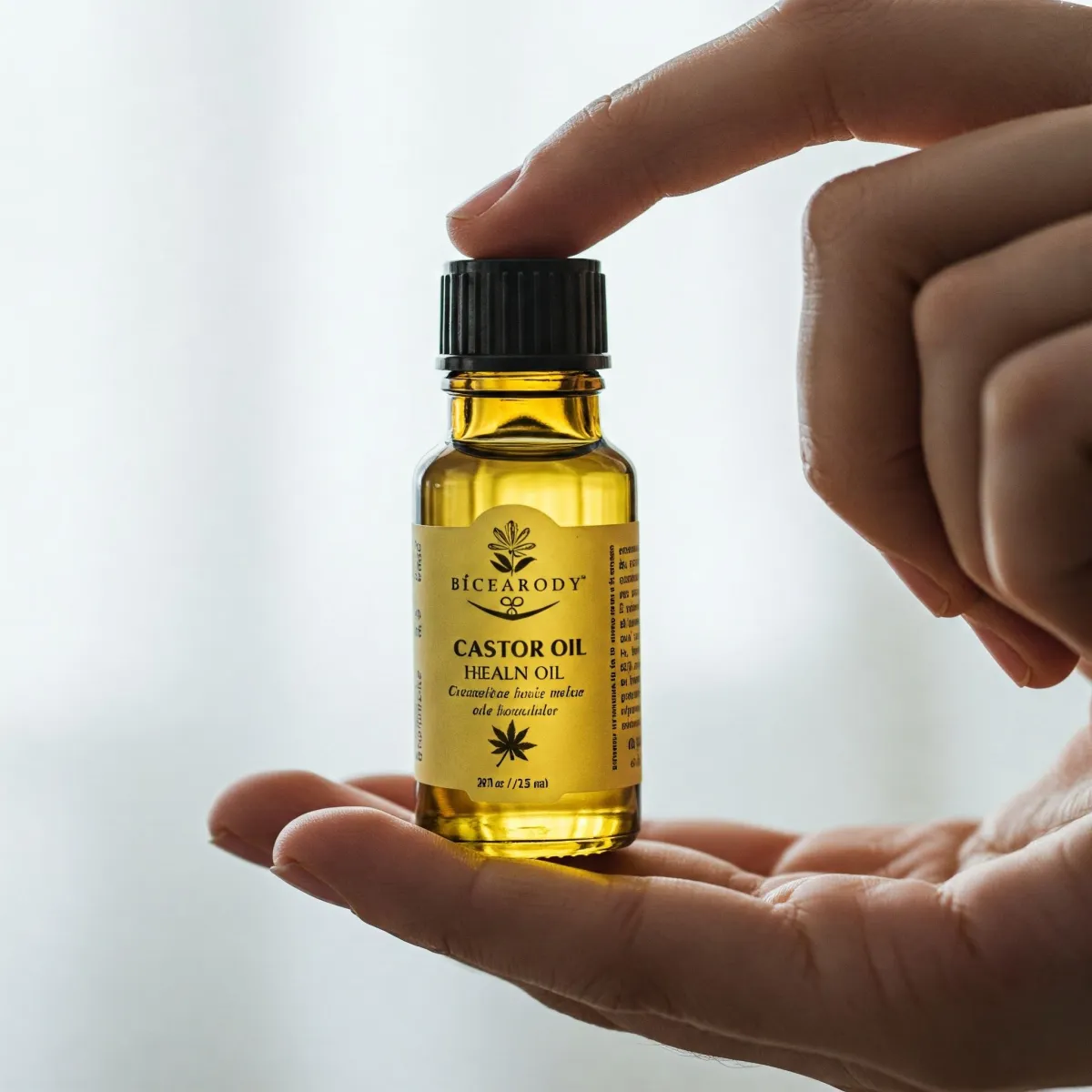
Welcome to Consult Kriba Blog

India: The Global Leader in Castor Oil Production and Export
India: The Global Leader in Castor Oil Production and Export
India dominates global castor oil production, supplying 85-90% of the world's demand, with Gujarat being the primary hub. The oil, extracted from castor beans, is valued for its high ricinoleic acid content, making it essential in pharmaceuticals, cosmetics, and industry.
Beyond India, Brazil and Mozambique contribute to global production, though at a significantly smaller scale. Castor oil is widely used as a natural laxative, skin moisturizer, and biofuel component, but excessive use requires caution. With rising global demand, India's role in the castor oil export market continues to strengthen.
Top Castor Oil Producing States in India
1. Gujarat – The Castor Oil Hub
Production Share: ~71% of India's total output
Cultivation Area: 1.022 lakh hectares (2021-22)
Production Volume: 15.13 lakh tonnes
Key Districts: Mehsana, Banaskantha, Kutch, Ahmedabad, Rajkot, Vadodara
2. Rajasthan
Production Share: ~16% of India's total output
Cultivation Area: 0.254 lakh hectares (2021-22)
Production Volume: 3.34 lakh tonnes
Key Districts: Barmer, Jalore, Jodhpur, Sirohi
3. Andhra Pradesh
Cultivation Area: 0.075 lakh hectares (2021-22)
Production Volume: 0.20 lakh tonnes
Key Districts: Ananthapur, Kurnool, Mahbubnagar
Other states like Odisha and Tamil Nadu also contribute to castor production, though on a smaller scale.
India’s Castor Oil Export Market
Major Importers: China, USA, France, Germany, Netherlands, Thailand, Japan, UK, Korea
Growing Demand: Rising global interest in natural, sustainable oils is boosting exports.
Export Potential: Gujarat, as the top producer, plays a key role in India’s increasing castor oil exports.
Top Importing Countries
China – The largest buyer of Indian castor oil.
Netherlands – A major re-export hub for Europe.
United States – High demand for bio-based products.
France – Extensive use in the cosmetics industry.
Japan – Significant demand in pharmaceuticals and skincare.
Market Growth & Trends
Projected to reach $2.3 billion by 2032, with a 5.1% CAGR.
Asia-Pacific leads in production and consumption.
Eco-friendly and bio-based products drive demand.
Industrial use in paints, plastics, and lubricants is expanding.
Castor Oil Supply Chain Overview
Cultivation – Castor seeds are mainly grown in Gujarat (86% of India's production), Rajasthan, and Andhra Pradesh due to their dry, subtropical climate.
The crop is sown in July-August and harvested in January-February, requiring minimal water but labor-intensive farming practices.
Processing – After harvesting, castor seeds undergo mechanical pressing and solvent extraction to produce crude castor oil, which is then refined, filtered, and bleached for purity.
The oil is further processed into derivatives like hydrogenated castor oil, sebacic acid (used in plastics), and methyl esters (used in biodiesel)
Distribution – The refined oil is sold domestically for use in pharmaceuticals, cosmetics, lubricants, and industrial applications.
Export shipments are containerized and transported from major hubs like Kandla Port in Gujarat, ensuring smooth global trade.
Export – India dominates the market, supplying 85-90% of global castor oil exports.
Major buyers include China (largest importer), the US, the EU, Japan, and Korea, where it is used in paints, coatings, bio-based plastics, lubricants, and cosmetics.
Demand is rising due to sustainability trends in industrial applications.
Challenges & Impact – Climate fluctuations, rising input costs, supply chain disruptions, and high water usage affect production. However, India's strategic cultivation, refining expertise, and global demand for eco-friendly products strengthen its dominance in castor oil exports.
Seasonal Cycle and Key Factors Affecting Castor Oil Production
Castor oil production depends on climate, soil, and regional practices. In India, sowing happens in July-August for rainfed crops and September-October for irrigated fields. It needs a hot, dry climate (25-31°C) with controlled rainfall to prevent diseases.
The crop matures in 140-175 days, with harvesting from January to April depending on sowing time. Brazil’s January-August second cropping avoids high humidity, ensuring better yields. Harvesting at the right time preserves oil content and quality.
Key factors affecting yield include temperature extremes, rainfall, and soil quality. Heat above 40°C reduces flowers, while excessive rain increases disease risks. Well-drained sandy loam soil supports healthy growth and high oil content.
Exporting Castor Oil: Key Regulations & Compliance Requirements
1. Documentation & Certifications
Import-Export Code (IEC): Mandatory for Indian exporters.
APEDA Registration: Needed for food-grade castor oil (not required for industrial use).
Phytosanitary Certificate: Ensures compliance with health & safety standards.
RCMC: Validates exporter registration with an authorized agency.
2. HS Codes for Castor Oil
15153090: General castor oil.
15153010: Refined castor oil.
34021300: Ethoxylated castor oil.
HSN Codes: Used for domestic classification.
3. Country-Specific Regulations
Labelling: Must meet country-specific requirements (product details, inspection, company info).
Import Duties & Tariffs: Vary by country, impacting pricing & profitability.
4. Export Process
Shipping & Logistics: Work with trusted shipping partners for smooth customs clearance.
Market Research: Understand demand, quality expectations & regulations of target countries.
5. Quality & Phytosanitary Standards
Must meet international standards to avoid rejection or penalties.
6. Export Promotion Councils (EPCs)
Provide support, certifications & market insights for exporters.
7. Compliance for Major Importers
China: Largest importer with strict quality & labelling norms.
Netherlands & USA: Specific regulatory standards apply.
European Union: Requires adherence to EU safety & labelling regulations.
Staying updated on these regulations is crucial for smooth and profitable castor oil exports.
Phytosanitary Requirements for Exporting Castor Oil to the U.S.
Phytosanitary Certificate
Issued by the exporting country's NPPO, confirming the oil is pest-free.
Must meet U.S. regulations for pest control and quality.
Inspection & Verification
Oil is inspected to ensure minimal pest presence (max 2% infestation).
An Authorized Certification Official (ACO) must verify compliance.
Treatment Requirements
Any required treatments must follow U.S. import regulations.
Treatment details should be documented if necessary.
Additional Declarations
Only include U.S.-required information on the phytosanitary certificate.
Export Process
Consult APHIS or state export certification specialists for guidance.
Ensure complete documentation to avoid shipment delays or rejection.
Following these steps ensures smooth export and compliance with U.S. import laws.
Pests & Phytosanitary Requirements for Exporting Castor Oil to the U.S.
Pests in Castor Crops
Capsule Borer: Damages seeds, reducing oil yield.
Semilooper: Feeds on leaves, affecting plant health.
Others: Aphids, whiteflies, and spider mites may infest plants.
Phytosanitary Requirements
Certificate: Issued by NPPO to confirm pest-free status.
Inspection: Oil must have minimal pest presence (max 2% infestation).
While pests mainly affect plants, strict quality control ensures compliance with U.S. regulations for smooth exports.
Key Differences in Exporting Castor Oil: U.S. vs. Europe
Regulatory Authorities
U.S.: FDA (food-grade) & USDA (phytosanitary compliance).
EU: EFSA (food-grade) & EU customs regulations.
Phytosanitary & Quality Standards
U.S.: Requires a phytosanitary certificate; follows ASTM (industrial) & FDA (food) standards.
EU: Similar phytosanitary rules but stricter on organic certifications & environmental impact.
Labeling & Packaging
U.S.: FDA-compliant labels, including allergens & ingredients; tamper-proof packaging.
EU: Multi-language labels as per Regulation (EU) No 1169/2011; eco-friendly packaging required.
Tariffs & Duties
U.S.: Import duties vary by HS codes & trade agreements.
EU: Common Customs Tariff applies, but rates may vary across member states.
Market Preferences
U.S.: High demand for industrial-grade castor oil (lubricants, coatings).
EU: Preference for organic & sustainable castor oil, especially in cosmetics & pharmaceuticals.
Key Takeaways
Stricter environmental rules in Europe than in the U.S.
U.S. focuses on industrial use, while EU emphasizes organic & cosmetic applications.
EU requires multi-language labeling, while U.S. prioritizes FDA compliance.
Exporters must adapt to these differences for successful market entry.
Key Steps for Exporting Castor Oil to Japan
Quality Standards
Obtain JAS certification (optional but boosts credibility).
Follow ISO 22000 for food safety & GMP for consistent quality.
Testing & Compliance
Conduct regular chemical tests (acidity, peroxide value, moisture).
Use third-party labs for unbiased quality verification.
Packaging & Labeling
Ensure Japanese language labeling & ingredient disclosure.
Use Japan-compliant packaging materials for safety & environment.
Market & Regulations
Research industry preferences (cosmetics, pharmaceuticals).
Stay updated on Japanese regulatory changes.
Meeting these standards ensures compliance and market success in Japan.
Key Challenges in Exporting Castor Oil to China
Market Fluctuations & Competition
Variable demand due to global economic conditions.
Price volatility affects profitability.
Regulatory & Trade Concerns
Restrictions on castor seed exports to protect Indian processors.
Policy changes (export duties, pricing regulations) impact trade.
Alternative Sources & Competition
China-Africa cooperation aims to reduce dependence on imports.
Efforts to boost domestic production despite challenges.
Quality & Compliance
Must meet Chinese quality standards to avoid shipment rejections.
Strict labeling & packaging regulations.
Geopolitical Factors
Trade tensions between India & China can affect exports.
Success in the Chinese market requires regulatory compliance, market research, and strategic planning.
Key Challenges for Indian MSME Castor Oil Exporters
Market Access & Competition
Compete with Brazil & China if they expand production.
Limited access to diverse markets increases market risks.
Regulatory & Compliance Issues
High costs of meeting international standards.
Trade barriers restrict smooth market entry.
Logistics & Freight Costs
Rising freight charges reduce profitability.
Shipment delays affect delivery timelines.
Financial Constraints
Limited access to funds for growth and marketing.
Price volatility impacts profit margins.
Technology & Infrastructure Gaps
Slow adoption of tech affects efficiency.
Weak infrastructure hampers production & exports.
Marketing & Brand Challenges
Limited global reach due to low marketing budgets.
Struggles in customer retention & securing contracts.
Solutions: Strategic planning, tech investment, and govt. support to boost competitiveness.
Indian Government Measures Boosting MSME Castor Oil Exports
The Indian government has introduced several initiatives to support MSME castor oil exporters:
Export Promotion Schemes:
RoDTEP Scheme: Provides rebates to offset various taxes and duties, enhancing global competitiveness.
Interest Equalization Scheme: Offers interest subsidies on export credits, making financing more accessible for MSMEs.
Infrastructure Support:
Trade Infrastructure for Export Scheme (TIES): Addresses export-related infrastructure gaps, benefiting MSME exporters.
Market Access and Promotion:
Export Promotion Councils (EPCs): Organizations like CAPEXIL assist MSME exporters in navigating international markets.
Financial Support:
Credit Guarantee Scheme: Extends support to MSMEs, facilitating access to working capital for exports.
These measures aim to enhance the competitiveness of MSME castor oil exporters by addressing financial, infrastructural, and market access challenges.
Conclusion:
India's dominance in the castor oil market is built on robust production, stringent quality standards, and supportive government initiatives. Despite facing challenges like regulatory compliance, market fluctuations, and logistical hurdles, the nation's strategic position remains unchallenged. With Consult Kriba's Reverse Sourcing Method, you can overcome these obstacles, secure a steady flow of sales, and boost your competitiveness in the global market.
Unlock the full potential of your castor oil export business with Consult Kriba's proven strategy. Contact us today to transform your challenges into opportunities and drive your global sales growth